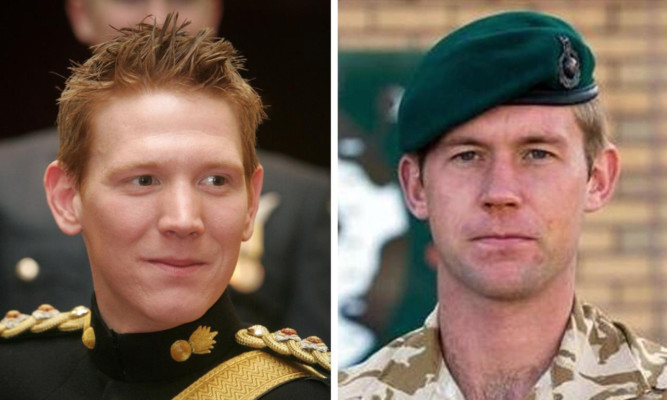A British soldier has described the moment he saw two colleagues killed in a “friendly fire” incident in Afghanistan.
Sergeant Guy Bates said he heard the “whoosh” of a Javelin anti-tank missile being launched before seconds later landing on his position, killing Captain Tom Sawyer, 26, and Corporal Danny Winter, 28.
The inquest in Salisbury, Wiltshire has heard the attack on the evening of January 14, 2009 had been ordered by the British troops’ Danish counterparts during a joint operation against the Taliban.
Capt Sawyer, of the Royal Artillery, and Cpl Winter, of 45 Commando Royal Marines, were among a group of British troops on a rooftop providing fire support for an operation clearing insurgent compounds north east of Gereshk in central Helmand.
Two other members of the patrol, including Sgt Bates, were injured in the explosion, which happened around 800 metres from Forward Operating Base Gibraltar.
Investigations into the incident have shown that the missile was fired by British personnel but the order was given by a lieutenant in the Danish Army only referred to as Soldier A.
The Danish soldiers have declined to attend the inquest and their evidence would be given by means of witness statements.
Sgt Bates, who has since left the Army, told Wiltshire and Swindon Coroner David Ridley that he had concerns about a previous joint operation with the Danes, so the British forces created a “restricted fire area” to reduce the chances of friendly fire.
He said that they were on top of the compound roof when mortars fired by the Danes started landing closer and closer to their position.
“What were they actually looking at? This was when the hairs on the back of my neck started to stick up,” Sgt Bates told the inquest.
He said that Capt Sawyer was on a radio alerting his superiors to the imminent danger when for a second time small arms fire started.
“At that point I was on my knees waving. It was not automatic, it was deliberately single shot and quite accurate,” he said.
“I was pretty sure that we were going to get hit by something…
“There was a second request for Javelin. I am not sure it came before or after that but it was again denied.
“I know Lieutenant Colonel Andrew Muddiman was deeply concerned that it was going to evolve into something bigger and was trying to contact them on the battle group radio.
“There was quite a bit of cursing ‘What do these plonkers think they are doing?’
“That message seemed to have got through because the small arms fire stopped.”
But, Sgt Bates said, a couple of minutes of later he heard a “whoosh” sound.
“I remember me and Tom had a bit of a discussion about what’s going on with their decision making process,” he said.
“Me and Tom were up on our elbows while lying down.
“I saw a light go into the air and I assumed that it was a flare. Just after that I remember seeing the impact and just for a split second everything illuminated and I saw it hit Danny and everything went orange.
“I don’t know if I blacked out but I came to and there were some small fires on the roof.
“I could hear Tom and I was scrabbling around in trying to find him. I applied a dressing to his head. I was also calling for a medic.
“I was expecting something else to come back down on us and I was trying to get everyone off the roof.”
Sgt Bates explained to the coroner that there was a “robust procedure” that British troops went through before firing artillery, mortar shells or calling for air support to target an enemy.
“There is a saying, the bigger the bang the more problems you can create when it goes wrong,” he said.
“I can say with complete clarity at no point did anybody in the fire support team or Lt Col Muddiman authorise any firing to cross the restricted fire line to engage the enemy.”
Asked whether the British troops were “properly resourced” in January 2009, Sgt Bates replied: “Not ideally.
“We were put in a difficult position with the siting of the Forward Operating Base and the helicopters were often unable to re-supply us.
“I think we were given enough to get on with the job.
“Were we properly resourced? We would always want something extra. The Americans call us ‘The Borrowers’ and we would make do with what we could get.
“Should we have had more specialist kit and more boys? Yes.”
Capt Sawyer, from Hertfordshire, was serving with 7 (Sphinx) Commando Battery, 29 Commando Regiment Royal Artillery.
He was in Helmand province deployed on operations as a fire support team commander attached to Zulu Company, 45 Commando Royal Marines.
Cpl Winter, from Stockport, Cheshire, was a specialist mortar fire controller and was serving in Helmand province with the mortar troop of Zulu Company, 45 Commando Royal Marines.
